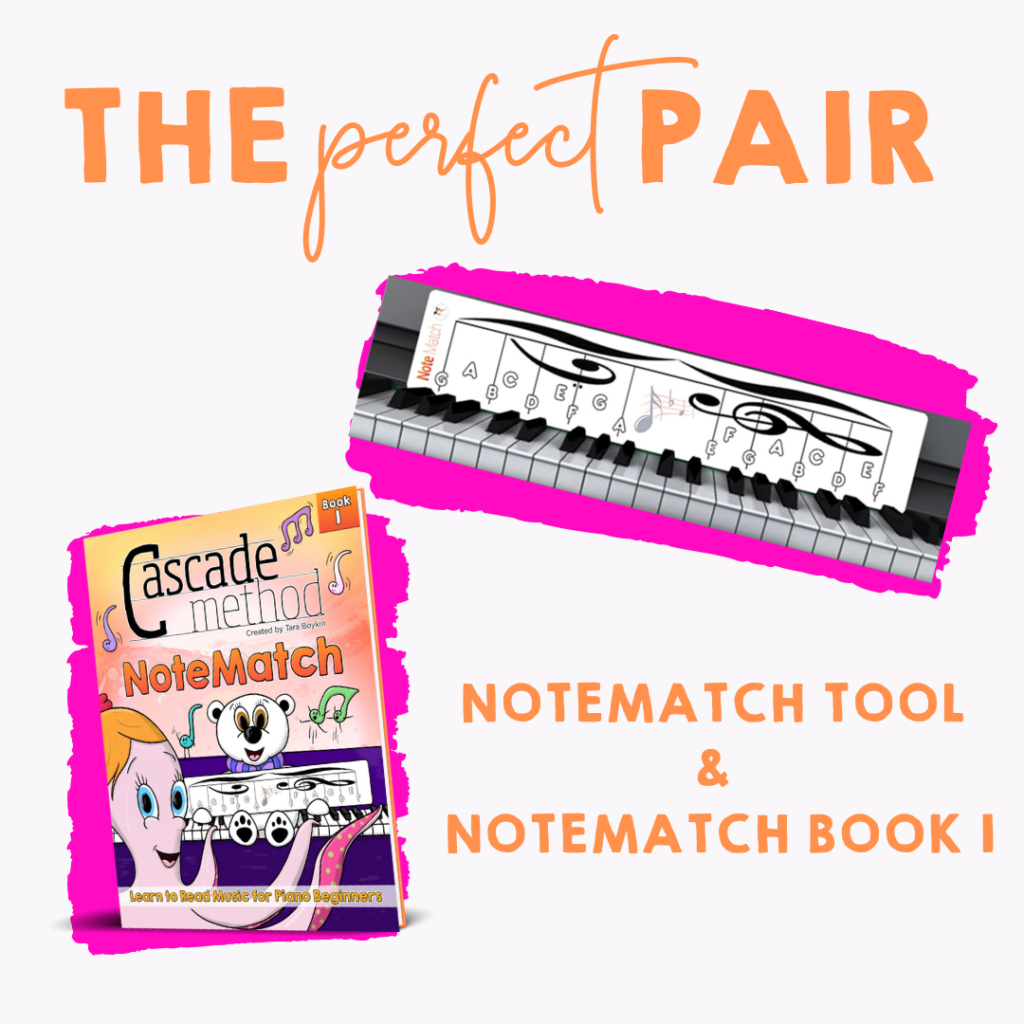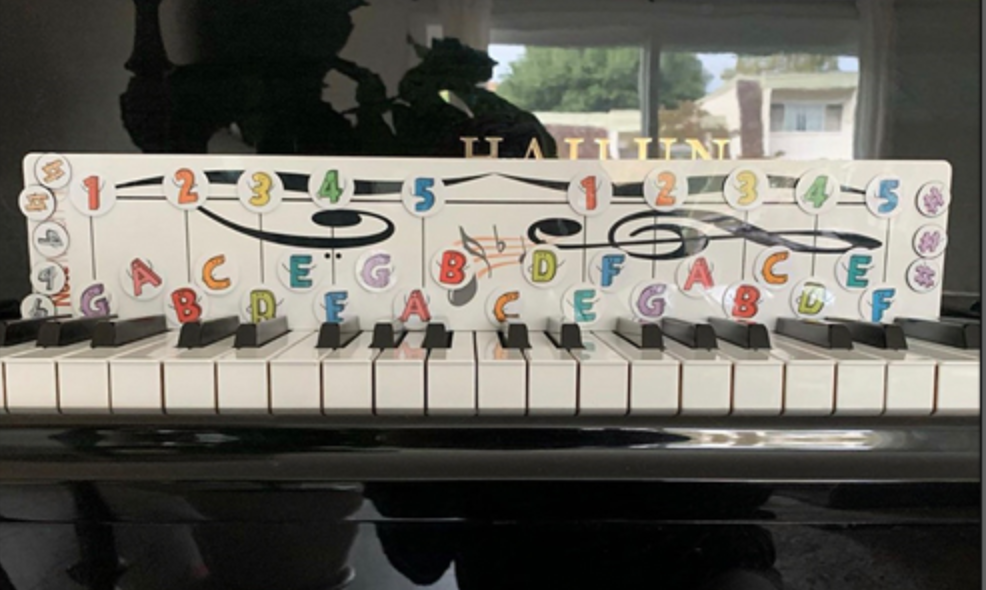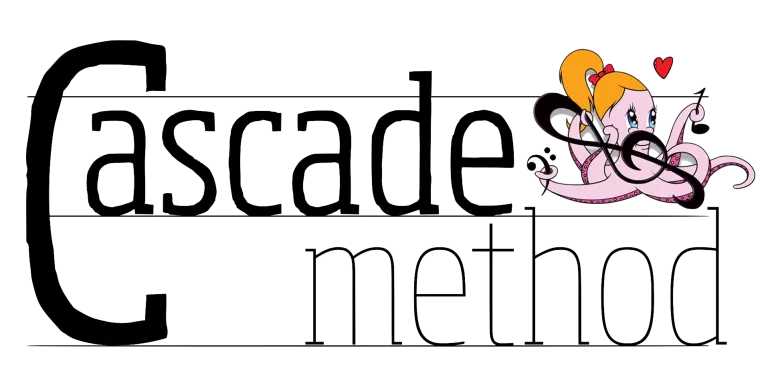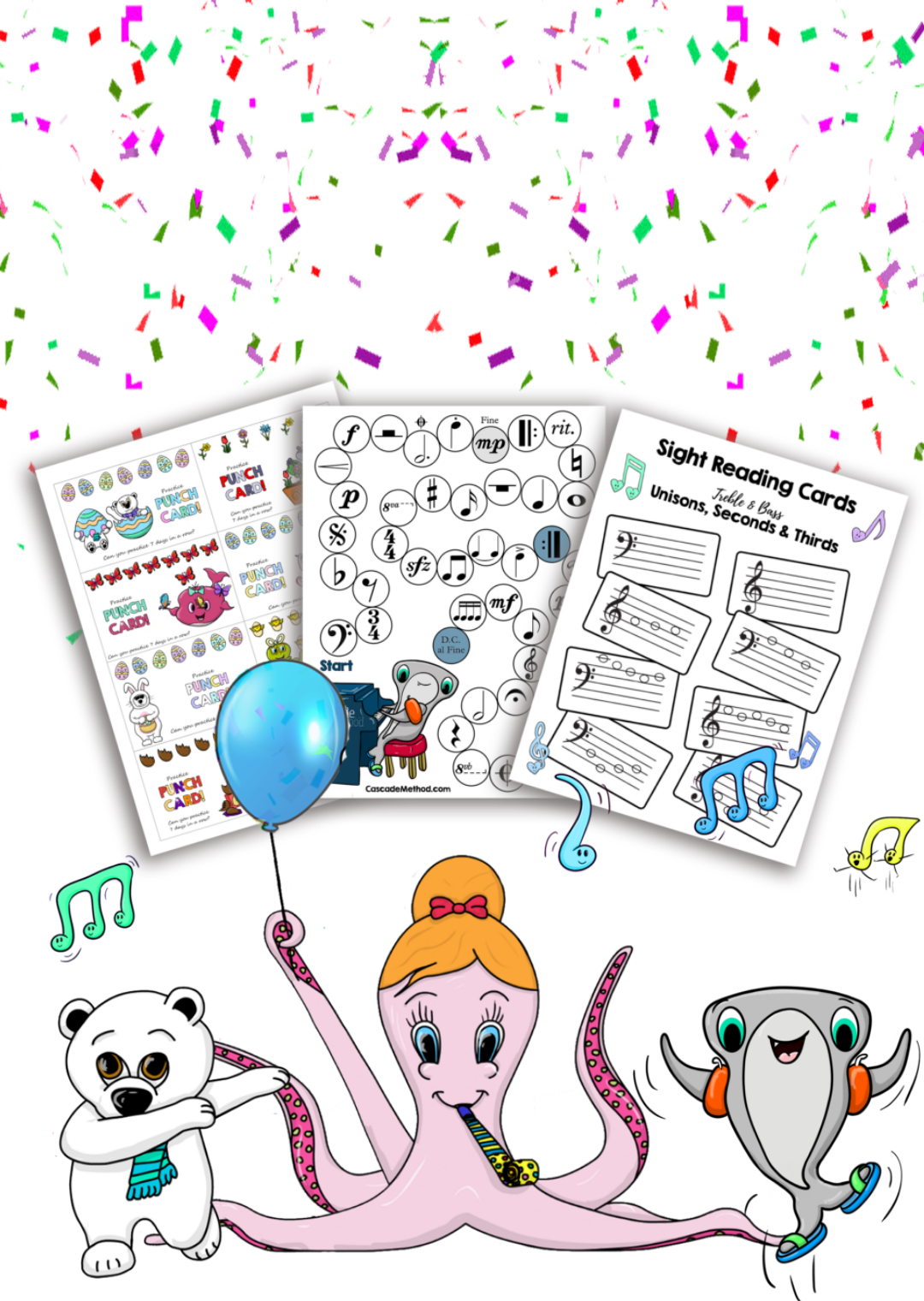
NoteMatch Book 1: Your Guide To Note Reading For Beginners
If we are having a conversation about teaching piano, it is guaranteed you will hear me talk about NoteMatch. This is THE tool that is missing in your visual elements that your students (of all ages) need to comprehend their sheet music. But today’s blog isn’t about the NoteMatch tool — it’s about my NoteMatch Book 1 that pairs perfectly with the tool!

NoteMatch Book 1 teaches students to read music from scratch! And to make it even better, every page is fun and interactive, which doesn’t feel like work to students. Hellloooo, sign me up?! 
While technically you do not need the NoteMatch tool to teach with the NoteMatch book – I highly recommend having it! I even have a package where you can get both!! It’s like how you can order a burger by itself – but it’s even better with a side of fries.
But before we take a deep dive into my NoteMatch Book guide, I want to give you a quick introduction on the tool itself…
So what is this magical NoteMatch tool?
I’m so glad you asked. 
Designed as a grand staff made of magnetic, whiteboard material, NoteMatch sits directly behind the black keys of the piano, allowing your students to see exactly where the notes in their sheet music correspond with the keys on the piano!
Because of its writable and erasable material, NoteMatch can be used piece after piece, until you or your student is an expert sight reader! Its perfect dimensions fit nice and snug on ALL pianos — from keyboards, to uprights, to grand pianos! With the help of this piano reading tool, your students will learn to read music in their very first lesson.

To learn more about this tool, check out this past blog which is all about the NoteMatch tool and why you need it for your piano lessons!
The All-You-Need-to-Know Guide About NoteMatch Book 1..
NoteMatch Book 1 is an excellent resource for kids who haven’t read music before. It is designed to teach students all the notes ranging on NoteMatch, which equates to 21 notes total. Book 1 sets the foundation for reading notes through weekly repetition and practice, allowing students to get comfortable with the piano in its entirety!
Personally, I always start from the beginning of the book with each student, and when I can see they are getting bored or something is too easy for them, then I move on to the next lesson! I have seen time and time again that once we make it to the end, my students will know the entire book! And my favorite part is seeing them grow in their confidence.
THE BOOK AT A GLANCE:
- NoteMatch Terminology
- Middle C
- Middle B and D
- Treble Clef Line Notes: EGBDF
- Smooshies (my fun term for seconds!)
- Skips n’ Stacks (for thirds!)
- Treble Clef Space Notes: FACE
- Bass Clef Line Notes: GBDFA
- Bass Clef Space Notes: ACEG
- Practice Pieces
- NoteMatch and Note Rush Challenges
- Certification
- Pocket NoteMatch Cutout
NOW LET’S BREAK IT ALL DOWN…
THE PRE-PAGES
I usually take about three lessons to complete the beginning of this book because I believe it is SO important for my students to fully grasp the tools and terminology that come with learning piano.
But before we can get to the note reading, we have to go over the dynamics! They’ll write songs with finger numbers to develop finger dexterity, we will go over rhythm rules, and they will learn loooots of terminology. We also go over the NoteMatch tool on paper and I will have them color code the entire thing so they can continue to come back to it over and over again.

MIDDLE C
I first expose them to middle C and then have them compose a mini composition with just middle C. I love having kids compose because I think this is where they really learn the most!
After their mini piece, there are flashcards to practice, and then they’ll scan the QR code and practice middle C on the Note Rush app. (This is a must-have app! I absolutely LOVE it!!) After completing the challenge on the app, they record their score in the workbook. I’ve included nine spaces for them to record their scores so they can visually see their progress!

If something is too hard, they’ll get discouraged and want to give up, so this is all about boosting their confidence and giving them that immediate satisfaction of “Oooh, I got this!! This is so easy!”
After they’ve practiced middle C, we move into a few other activities with the note to keep boosting their confidence, until they get the hang of it completely.
MIDDLE B & D
Middle B & D follow the same format as Middle C and then we COMPOUND – meaning we do middle B, D, and C! They will continue to practice these three notes until they’ve gotten it and once they think it’s easy, then we don’t have to redo them and they can just practice songs with those notes!
3 Question Method
I’ve included a page on my 3 question method that asks the following:
1- Is the note in the Treble Clef or the Bass clef?
2- Is it a LINE note or a SPACE note?
3- If it’s a LINE note, is it line 1, 2, 3, 4 or 5? If it’s a SPACE note, is it space 1, 2, 3 or 4?
NOTEMATCH E,G,B,D,F
Next are the five lineups with EGBDF where I will expose them to these notes and they’ll use the QR code to practice! Now, this does not mean they’re playing pieces, but they are learning!
You see how the format for learning each set of notes is similar and therefore easy for students to follow and get the hang of?!
I begin adding in real pieces that they may already know. I have them color the notes on the tiny paper NoteMatch in the workbook. This shows them they can color on the real NoteMatch with a whiteboard marker! I’ll have them hunt through the piece and identify all the notes, so they get used to analyzing the piece before playing it.
By this point, they should know the notes in the piece they are about to play and think “WOW, I’ve got this!!”
Smooshies
Smooshies are what I call notes that are next to one another! I tell my students that “smooshies” are a fun word that Olivia the Octopus came up with, but musicians like to call them “seconds.” They get such a kick out of it. 

Treble Clef Space Notes: FACE
Bass Clef Line Notes: GBDFA
Bass Clef Space Notes: ACEG
As they learn each group of notes, the framework stays the same with a mini piece, a mini composer section, a flashcard section, and the Note Rush section! They won’t be playing big pieces yet, but they are getting exposed!
PRACTICE PIECES
Practice pieces like Happy Birthday, London Bridge, The Wheels on the Bus, and more are included for students to practice songs they’ve heard before using all of the notes. Remember to have them identify all the notes in the piece before they play. This is where having the NoteMatch tool is really helpful!!
NOTEMATCH CHALLENGES
The last 10 pages of the workbook include a variety of challenges using the app, Note Rush! Students will scan the QR code, complete the challenge, and then fill in their score and date completed. The challenges are fun, they help students see their progress, and they love when they beat their high scores!!

Challenges include:
Middle C, Middle B and D, Middle B, C, and D, EGBDF, FACE, GBDFA, ACEG, Space Notes, Line Notes, and NoteMatch!
MINI POCKET NOTEMATCH
The very last page includes a mini NoteMatch that they can cut out to refer to on their own!

The NoteMatch book 1 is a great place to start with students who are just beginning piano – but don’t just take my word for it! Take it from one of our own Cascade Certified Teachers, Betsy! She gained 26 students in a month, and is just LOVING her online lessons with the help of the NoteMatch piano reading tool paired with the NoteMatch Book 1!
You can get an inside look into ALL the pages of the NoteMatch book here!
I hope this was helpful! Please comment below if you have any other questions and happy teaching!













